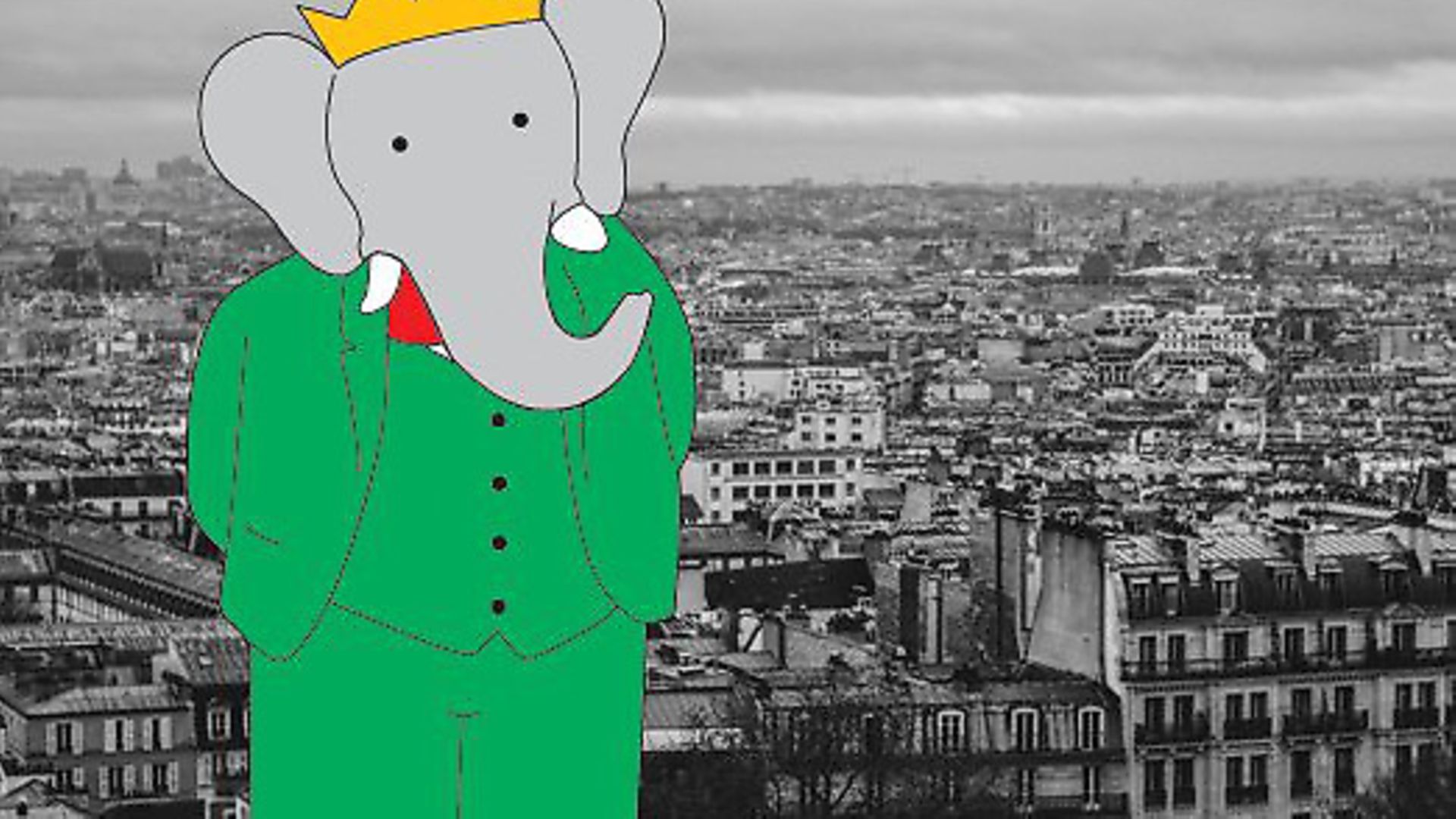
The world’s most famous Frenchman, a racist hangover of colonialism, the anti-Peter Pan, or simply a very dapper, fun-loving elephant?
Babar’s Guide to Paris, out this month, takes an amiable stroll through the main sites and little cafes of the great city for the benefit of our hero’s youngest daughter, visiting it for the first time.
This is the 45th picture book featuring the talking elephant once described by a former French Cultural Minister as the most famous Frenchman in the world and by an approving General de Gaulle as providing ‘a certain idea of France’.
The artwork by Laurent de Brunhoff in style and subject matter follows closely in the footsteps of his father Jean, who died in 1937, aged only 37.
The text for the six titles he illustrated before his death were supplied by his wife Cécile, who refused to take any credit for tales originally told to her three children at bed-time. Today, Laurent’s second wife Phyllis Rose also provides the stories for her husband’s delicate water colour illustrations, whose characters are as always securely enclosed within black ink outlines.
Ever since Babar left his jungle home for city life and donned human clothes he has remained a favourite with children. His pleasures are multiple, including going up and down on his first trip in a lift so often that he has to be warned by a shop employee that this is not a toy. Later on he marries fellow elephant Celeste and returns to rule his country as its new and benevolent king.
What could be more charming and innocent than these serene stories, with their idealised settings either in town, or in a remote country in Africa? Well, depending on who you ask, plenty. The Chilean Marxist sociologist Ariel Dorfman, for instance, had quite a different view.
His much-quoted book, The Empire’s Old Clothes: What the Lone Ranger, Babar and Other Innocent Heroes Do to Our Minds accuses the whole Babar oeuvre as acting as an apologia for French colonialism.
In this scenario, Babar is first softened up in Western ways while abroad and then sent back home in order to take control as chief consul for the French imperial powers who could then operate through him via indirect rule. The animals that resist this process are roundly defeated. Babar henceforth comes over as a superior being securely assimilated to French urban values while spurning the essentially playful and generally unworldly nature of his original culture.
Laurent, still going strong aged 91 and a long-time resident in New York, now has some sympathy with this criticism. When his father’s The Travels of Babar was re-issued in 1991 he edited out the original bug-eyed, fat-lipped ‘ferocious cannibals’ enountered by Babar and Celeste after they crash-land their balloon on an island.
He also subsequently withdrew his own second book, Babar’s Picnic, feeling that his 1949 illustrations of spear-carrying black natives, based on his father’s drawings, also came over as uncomfortably racist.
Other critics of Babar meanwhile have taken offence at the sexism they insist is in his stories and also their unthinking worship of money and all it can buy.
But there is also a more benign interpretation of these stories on hand. This focuses on the psychological significance of Babar’s perceived journey from childhood to maturity.
Children know that they have to grow up, and generally look forward to the process. But for most of them this will also mean increasing separation from home comforts and parental support. This separation is forced on Babar early on when his mother is shot dead by ‘a cruel hunter’ on the fourth page of his first adventure.
Running away to town he soon finds compensation in the form of a rich old lady who provides him with money to buy a snazzy new green suit, spats, bowler hat and a red sports car. All that remains for Babar to explore are his new powers of sexual fulfilment, duly met, we assume, by the charming Celeste after they set out for their honeymoon ‘in a glorious yellow balloon’.
Babar is in this sense the exact opposite of J.M.Barrie’s Peter Pan. While Peter wants always to stay young, Babar relishes adulthood with its new freedoms and opportunities.
So while young readers may be picking up some false notes based on past colonialist ideas, particularly from earlier editions, they are also provided with a refreshingly positive picture about growing up. Babar’s penchant for style and his enthusiasm for the pleasures of everyday living remain as cheerfully contagious as ever. With so much lightness and gaiety on offer, one product perhaps of the extremely happy domestic life enjoyed by the de Brunhoff family before Jean’s tragically early death, it is small wonder that Babar’s adventures still prove so popular.
Nicholas Tucker taught Children’s Literature at the University of Sussex and is the author of The Rough Guide to Children’s Books









